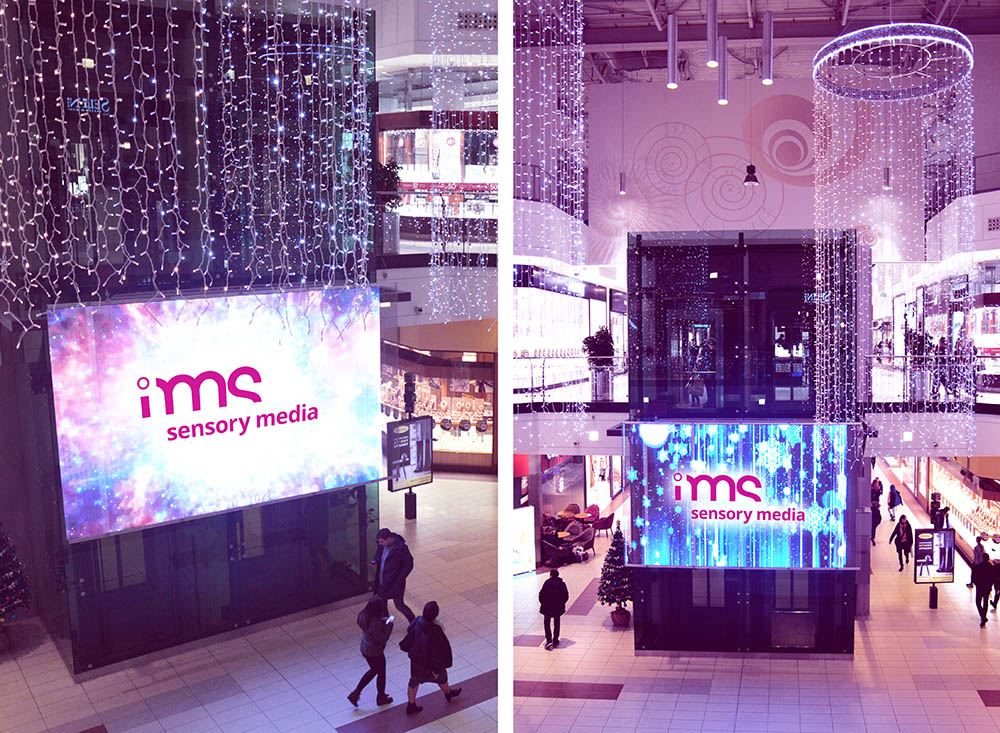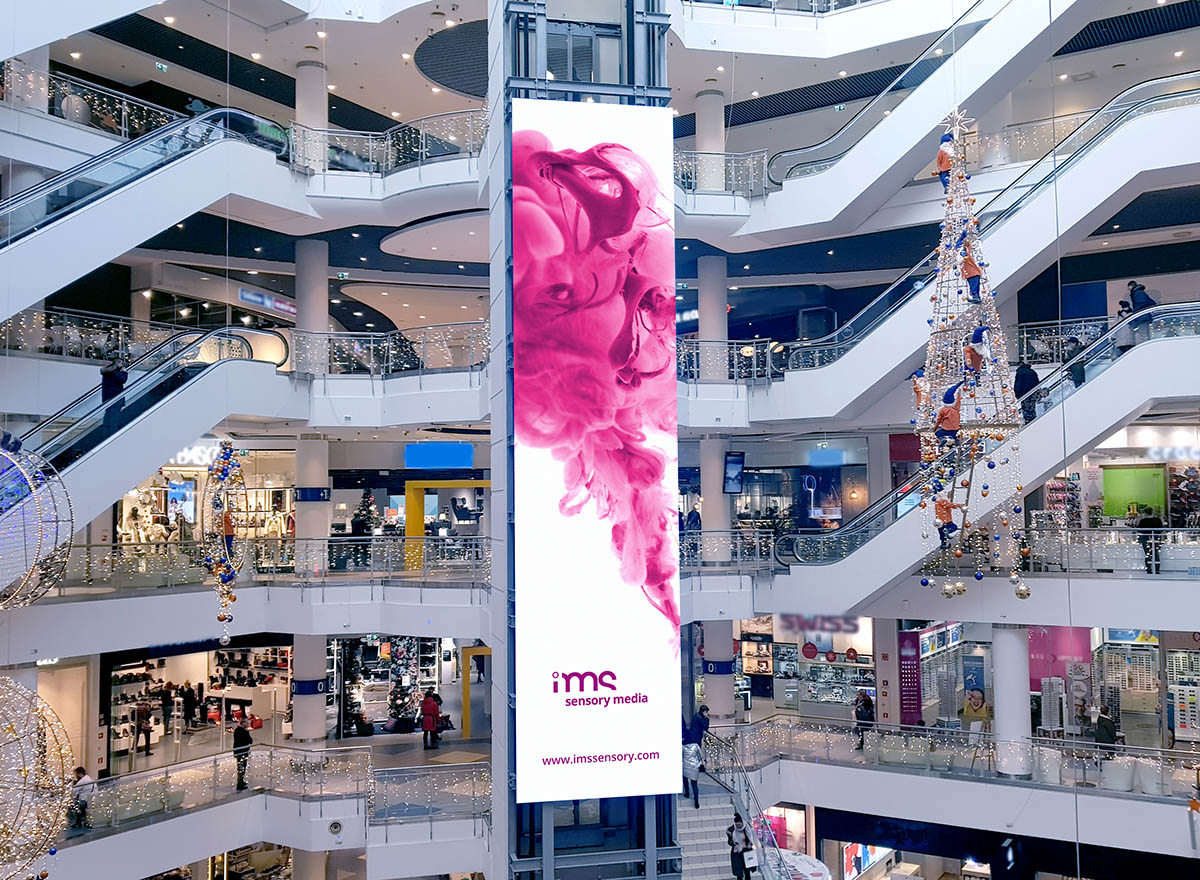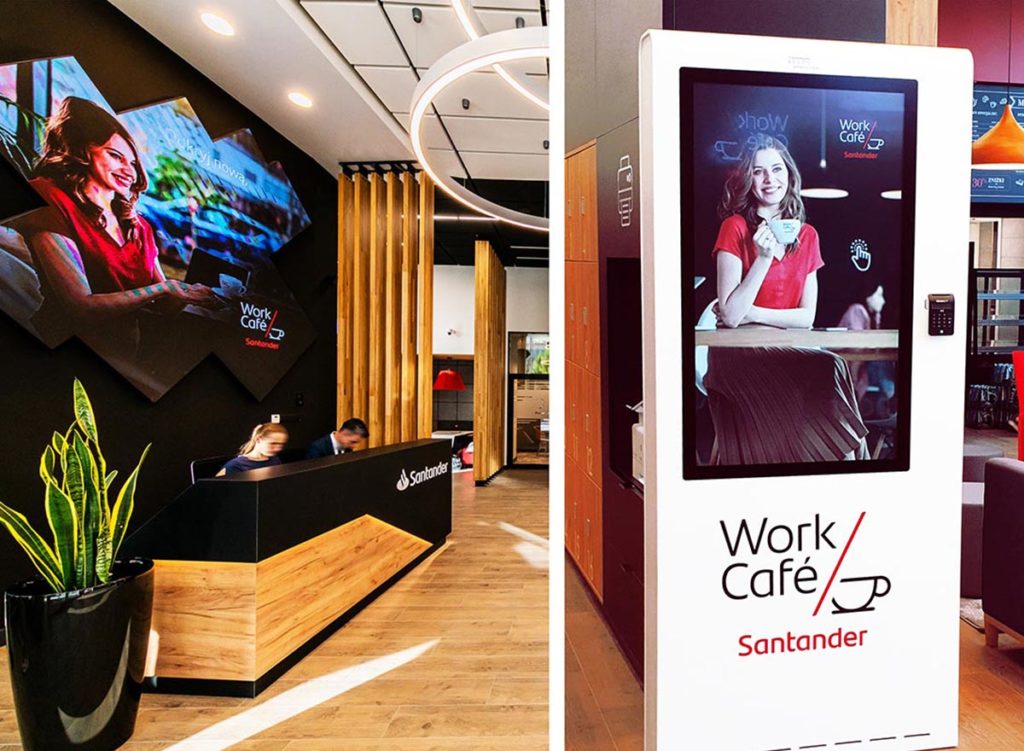DIGITAL SIGNAGE — WHAT IT IS?
Digital signage is much more than a monitor placed in a shopping mall. Digital signage is a type of system that allows you to present content tailored for your Customers on Storefront, Video Walls, or Interactive screen for mall located in desired locations. The content in Digital Signage installations, whether self-promotional or advertising, is intended to draw consumers’ attention so that they get interested in the offered product/brand, purchase the goods, or return to the store a second time and make a purchase at another time.
Today, Digital Signage systems can be found practically everywhere — in shopping malls, branded shopping networks, restaurants, means of transport (trains and buses), hotels, and offices — where they are suitably adapted to the people visiting given places.
EXAMPLES OF DIGITAL SIGNAGE IMPLEMENTED BY US

JURAJSKA CZĘSTOCHOWA

BLUE CITY WARSAW

SANTANDER BANK
WHAT DOES THE DIGITAL SIGNAGE SYSTEM CONSIST OF?
Clearly, the Digital Signage system consists of large-format screens. They can be made in various sizes and by various technologies, such as LCD, AMOLED, and e-ink. However, regardless of the technology used and the size of the screen, they all have a common feature, that is displayed content — planned and published by the central content management system.
The screens belonging to the Digital Signage system (Digital Storefronts, Video Walls, Interactive Screen for Mall etc.) differ to a large extent from ordinary monitors. First of all, they are adapted to continuous operation, they can have very high brightness, and their management is carried out remotely from a distance.
Content management is another element of digital signage. The Digital Signage content management system is a software that allows to plan and deliver content to monitors. This software allows one to plan the order, time, and number of repetitions of the content in such a way that, for example, it is properly selected for the time of day and also has many other advanced functions that allow one to properly select and send content.
The device management system is the next piece of the puzzle called digital signage. By controlling devices remotely it is possible, for example, to reduce the risk of their damage. It also allows for a quick response in the event of failure or damage.
The system of content creation also belongs to the digital signage system. In this software, it is possible to design appropriate content, use existing graphics and multimedia, distribute content on the surface of one screen, or create a composition consisting of multiple monitors.
The last component of digital signage is the analyzing and reporting system. It shows information about what content and in what quantities are presented on the monitors. The software also counts interactions, and this data can be used for analyzing campaigns.
DIGITAL SIGNAGE — WHAT PURPOSE DOES THIS SYSTEM SERVE?
The content displayed by the digital signage system is never accidental. In the same way as various types of advertising campaigns are planned, the content presented on the screens as part of the digital signage system also has to be planned. Marketing carried out in this way is perfectly suited for large-scale companies, and the marketing campaign can be made as a whole by synchronizing the pieces of content appearing in different locations.
The content emitted through digital signage is created on the basis of the following:
- Materials provided by the partner and advertisers,
- Special neutral content developed by IMS,
- Own software for managing the digital signage system
- IMS video studio production,
2D and 3D animations, spots, films, posters, sounding, dubbing
DID YOU KNOW THAT
Four out of 10 Customers confirm that the sense of “communication directed personally to me” prompts them to buy
Elevating the Customer Experience / Walnut Unlimited - January 2019
Contact us for more information.





































































